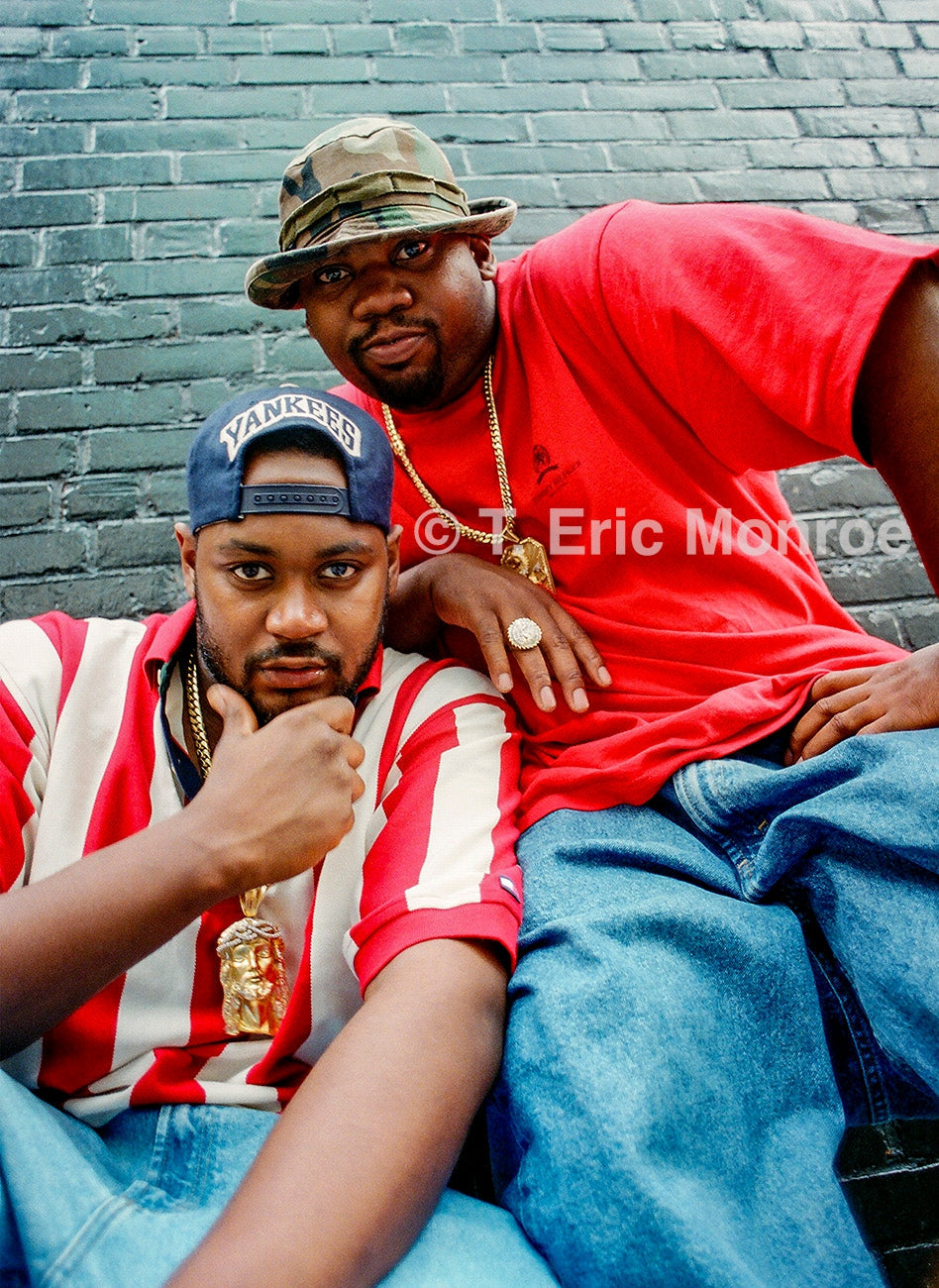Moments
I did not have a light meter to tell me the proper f-stop to set my aperture, nor did I have polaroid back to see what things actually looked like. My camera was a Canon AE-1 Program, manual everything.
I would make the flashes pop every so often so I could see where and how the light fell, I did a few calculation to determine possible f-stops based on feet of the flash away from the subject, how much light I would lose because of the gel on the flash, it was the best I could do.
I motioned my hand asking to take one photo of him and Talib. They looked at each other and agreed. I stepped back, focused my Yashica Mat (124 G) camera, took one shot and thanked them as they headed for the stage.
Using the ambient light in the hallway I began shooting them from different angles. After the first 8 frames, the group relaxed and stopped doing the typical 'rap, yo!' poses, vibing with each other. Each of their actions was fluid, in sync with the movements of the others. If there was a low angle shift, someone else moved high; if someone gave a look, someone else would motion or adjust their look to stay complementary to the person adjacent.
When I arrived on set, the taping of the video was in full swing, and Lauryn and crew were handling all that needed to be accomplished, moving from scene to scene.
After meeting The Roots at the park, we started out with some shots near a playground area. Then, we moved and sat on large cement step or bleachers. Questlove, Black Thought, and Malik B. flowed in their space. I didn’t direct them. I just want to capture them in their essence.
A few minutes later, RZA walked up the sidewalk. I remember seeing the rings on his hand from a distance. As RZA approached the MTV studio doors, I stood in the sidewalk, greeted RZA with “Peace,” and asked him if I could take a picture of his rings.
I was able to capture a personal vibe among Tupac and his friends — guys from the groups Thug Life and the Outlawz. After the main taping was done, the news cameras started to leave. The bulk of the news press got the shots they needed to portray Tupac as the “Dangerous Thug,” which they would print in the next day’s papers. It felt like Tupac knew how to play with the media to keep his name in the press. He knew how to press their buttons, challenge them mentally; their only recourse was to portray him as a troublemaker. The pattern was reactive and visible.
Hoodshock was a free outdoor hip-hop festival used as a way to increase voter registration. Conceived and organized by Lauryn Hill, the NYC venue was in front of the Harlem State Office Building at 125th Street and Adam Clayton Powell Jr. Boulevard.
The day of the event, I had no urgency to get there. I was not on assignment to cover the show, just wanted to get a few shots to sell to magazines. This was pre-internet — no social media, no instant sharing, and no cellphone cameras.










